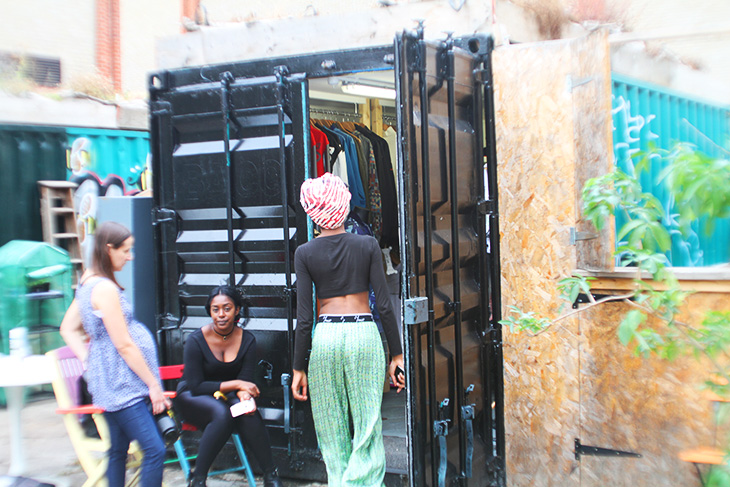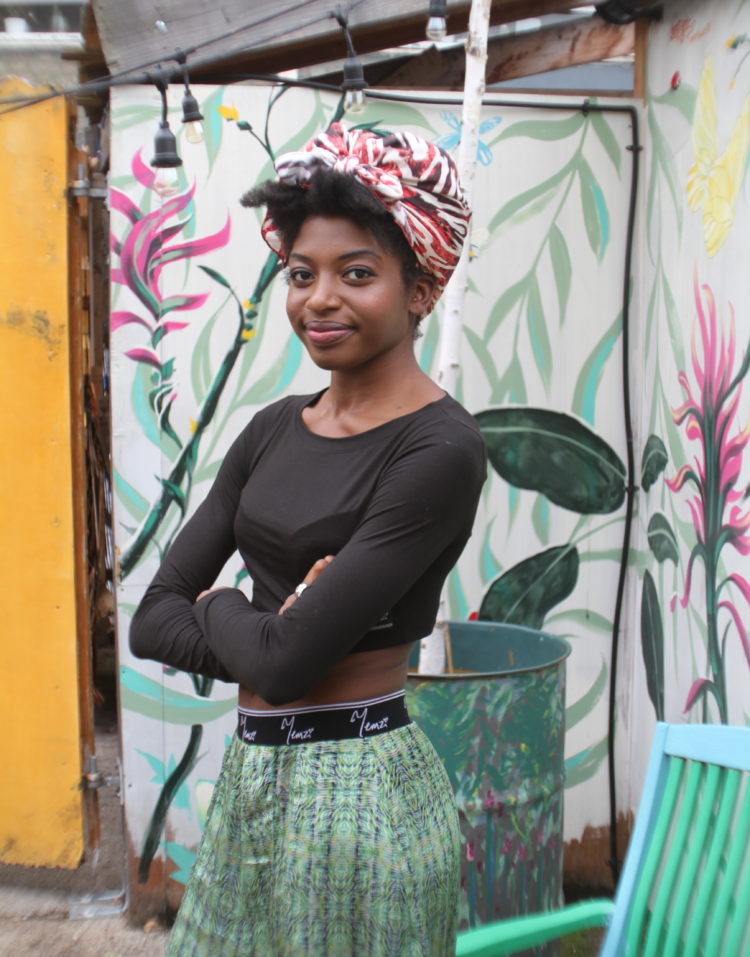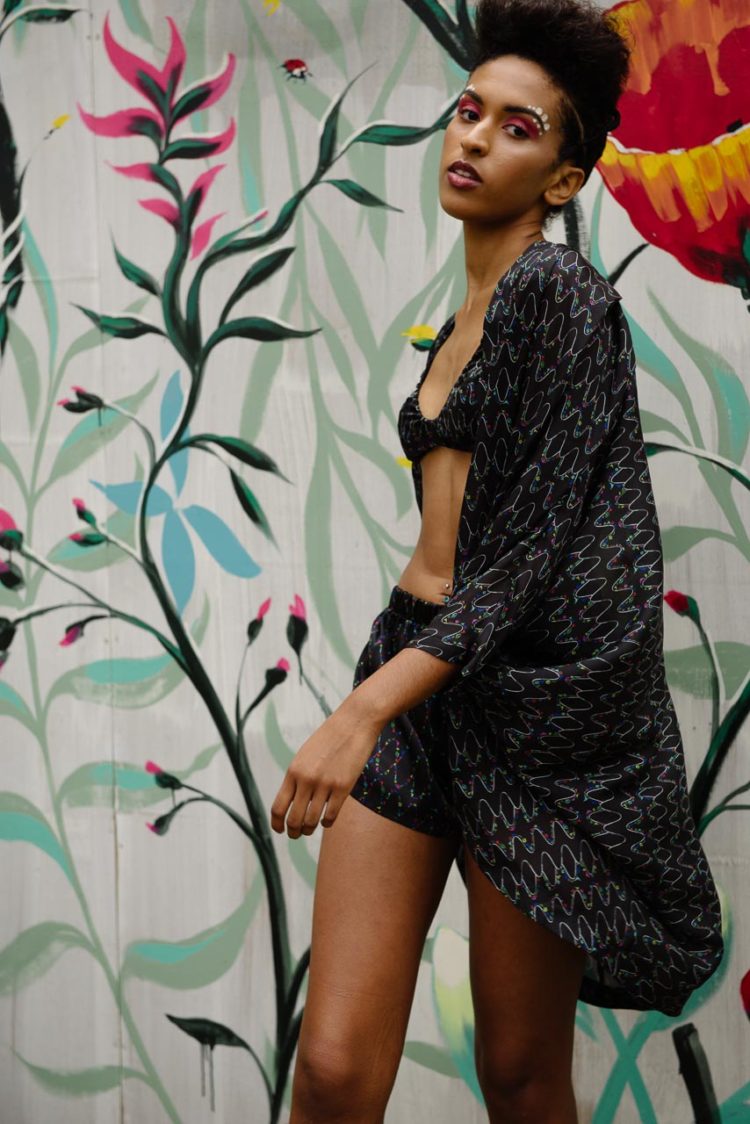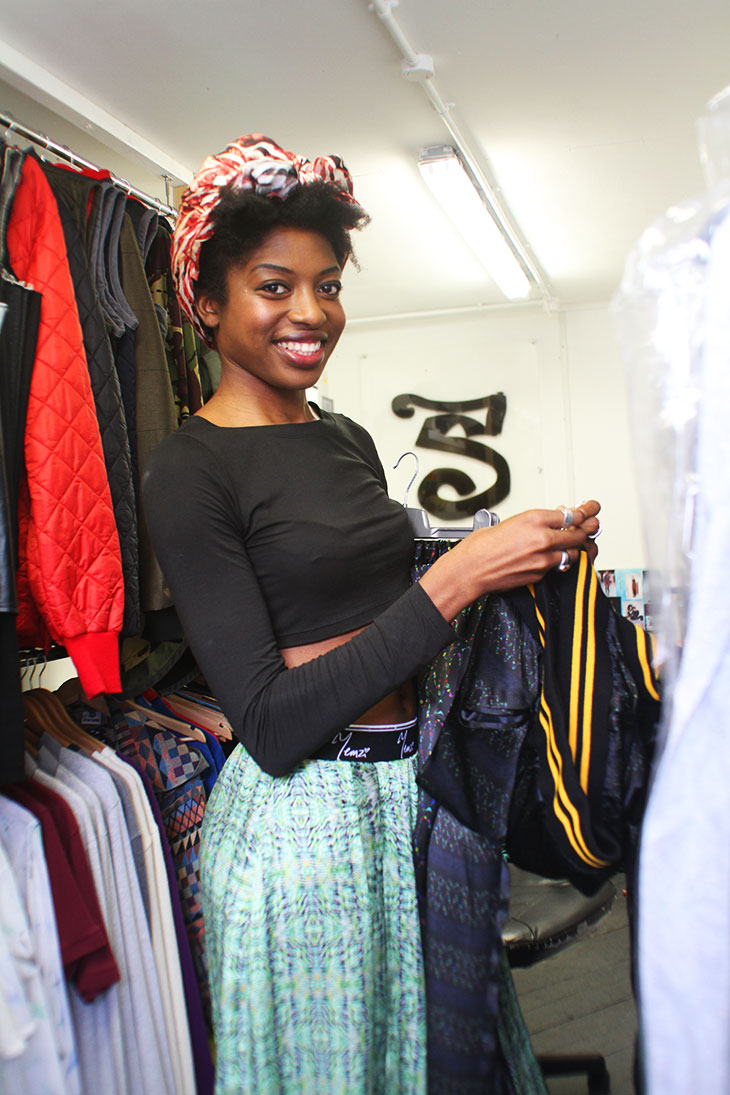Scarification, George Orwell and kimonos… British-Nigerian designer Elizabeth-Yemi Akingbade’s SS17 Yemzi collection is full of different influences.
I caught up with her in her east London studio (in a container in an urban garden) as the shoot for her Spring/Summer 17 lookbook and ‘zine was in full swing.
When did you start designing Yemzi?
I’ve been a designer since 2013 when I graduated from surface design at the London College of Communication. I’ve been designing since I was a young girl but that was the first actual time I actually put something together. It was a T-shirt collection.
The print on the fabric is inspired by the scarification marks of the Yoruba tribe.
I produced my first ready-to-wear collection last year in September – the one I sold at the Southbank Centre at Africa Utopia. This is my second ready-to-wear collection and it’s called Down and Out in London and Lagos. We’re shooting it in a World War II bunker in Dalston with two models.
The print on the fabric is inspired by the scarification marks of the Yoruba tribe. The little pieces and colours you can see are actually tribal marks that are put into patterns. It’s all on silk chiffon, silk satin, silk blind and cotton ribbing.
We’ve got threading on the hair cornrows, Afro texture out. it’s very Afrocentric but modern at the same time.
https://www.instagram.com/p/BKgan8KB2Wi/
The name of the collection is a play on the book by George Orwell, Down and Out in Paris and London; it fits with that WWII bunker vibe. We really tried to work on the concept and make it really strong.
What’s the London element of the collection?
I’d say it would be the sports ribbing and the funky edge. I think London is like the most playful place for fashion… Other people do great fashion, but we’re more daring. I wouldn’t say more creative but we’re more out there. So that’s the edge that I’m bringing.
Are you born and raised in London?
Yeah, I was born in London, raised in Bournemouth. Both my parents are Nigerian.
Is there a running theme through your collections?
My first ready-to-wear collection had silk kimonos that sold quite well. They featured in my last collection, and they’re featured in this collection as well. Just the fabric has changed.
Yemzi SS17 fashion film drops soon!
To watch make sure you join our mailing list on https://t.co/vRAmqARbJJ pic.twitter.com/BezItMOe0X— YEMZI (@Yemzi_) September 17, 2016
They’re key pieces that we’re going to see moving forward. The bomber jacket has been developed. We’ve got lots of trousers in there. I’m trying to develop my style so you can tell it’s by the same designer. But yes, the kimono is a key piece that you’ll see again.
What’s been a career highlight?
I haven’t had one yet. Still early days! I’m looking forward to dressing Shingai Shoniwa from the Noisettes. I met her recently and she wants to borrow a look from SS16. That’ll be great.
I sold some stuff at Berlin Fashion Week at a pop-up with a store called District Six. That was quite nice and I had a pop-up called Vibes On The Roof in Dalston, which was really great.
The girls all have natural hair: it’s about being bohemian and natural and creative and fun.
We had spoken-word artist JJ Bola; we had new-age music; we had Pohe who came in from Nigeria. It was really nice to have people experience the brand because I want to do fashion but I also want the whole culture around it and the vibes. It’s not just about wearing it; it’s really being about it.
One thing I do is to make sure is that the girls all have natural hair: it’s about being bohemian and natural and creative and fun.
Every month on my blog on the first Sunday I interview a Yemzi girl who encompasses that type of vibe. I’m trying to really paint the Yemzi girl and have events and clothes and music and create this Afropolitan, British-Nigerian culture.
What are the biggest challenges of being a fashion designer?
I guess because there’s so many other fashion brands out there, we’ve all got so many clothes and that’s why I want to make pieces that can be worn over and over again. And everything is limited edition as well so everything is a bit more expensive but when people buy the pieces they’ll know they probably won’t see anyone else in it. Everything’s quality; everything’s silk and made in London.
I’m very creative; I enjoy the process. I love drawing and sketching. The prints are hand-drawn and then everything goes onto Photoshop and then printed on silk. I love that element. It’s the money side I’m not so good at, chasing orders and trade shows to get orders. You have to balance it in fashion – that’s really key.
If you want to continue and grow, you can’t just be about making nice dresses and throwing parties. You have to think about how you’re going to get a good cash flow and having a balanced collection.
Check out more at yemzi.com. The lookbook and film should be dropping very soon.




